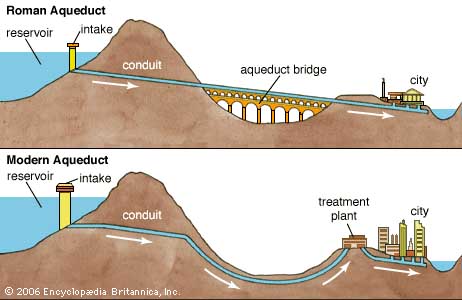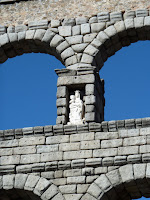Located in Segovia, Spain, the Aqueduct at Segovia was built around during the second half of the first century A.D. when the Roman empire was under control. Its also one of the most significant and best preserved monuments of the Iberian peninsula. The aqueduct supplied water from the Frio river to the city of Segovia into the 20th century. If the aqueduct wasn't there and Segovia was low on water resources, then nobody will have water to use. So this is the purpose of the Aqueduct of Segovia. The aqueduct was more than 10 miles. Some of the arches of the aqueduct was destroyed during the conquest of the Muslims in the 9th century. Shortly around the 15th century, the Catholic kings ordered the people to rebuild the arches at the Aqueduct.
 |
| Aqueduct at Segovia |
 |
| Ancient Roman aqueducts compared to today |
 |
| statue of Hercules with the Virgin Mary |
 |
| The top of the Aqueduct of Segovia |
Before the water runs into the city of Segovia, it first gathers in a tank called El Caseron (Big house), then it is led through a channel to a second tower known as the Casa de Aguas (Waterhouse). From there the water is naturally decanted and sand settles out before the water continues its route. Next the water travels more through a one percent grade until it is high upon the Postigo, a rocky outcropping in which the old city enters, the Segovia Alcazar. This aqueduct will always remain one of the most impressive Roman aqueducts in Europe due to it being served for over 2000 years.
Works Cited:
[1] Roman Aqueducts outside Rome: Acueducto De Los Milagros, Almunecar, Aqua Augusta (naples), University-Press Org, 2013.
[2]http://www.spain.info/en_US/reportajes/el_acueducto_de_segovia_la_huella_del_imperio_romano_en_castilla.html
No comments:
Post a Comment